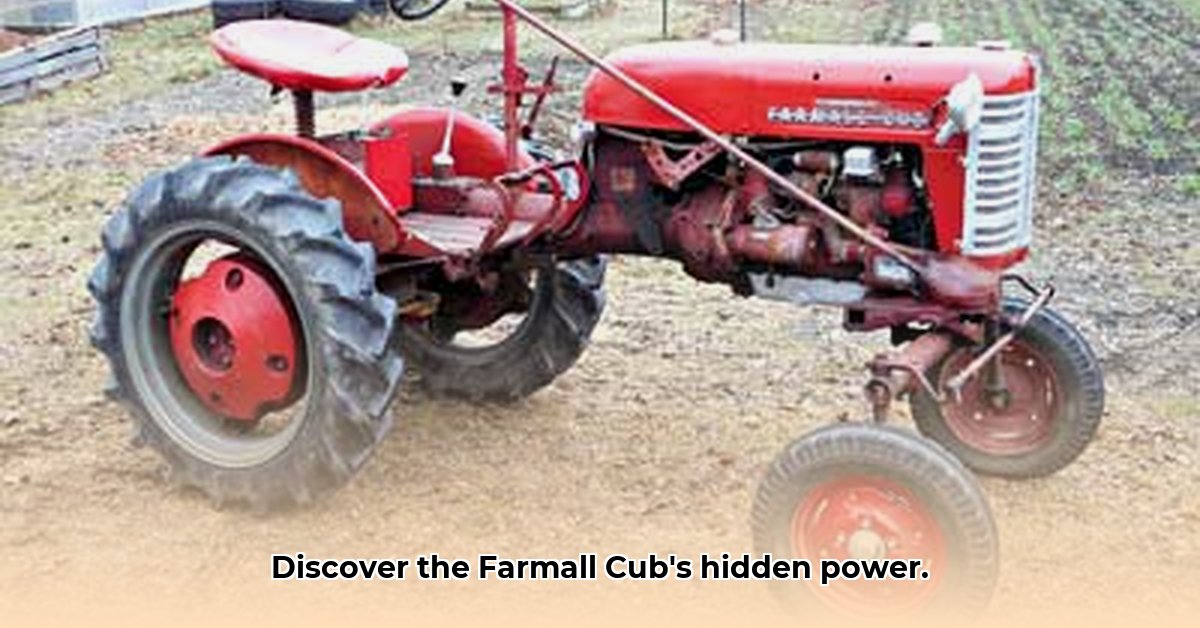
The Farmall Cub tractor—a compact powerhouse from the mid-20th century—wasn't just another machine; it quietly revolutionized small-scale farming. Its impact resonates even today, offering surprisingly relevant lessons for sustainable agriculture. This article explores its history, technological aspects, and contribution to—and limitations within—sustainable farming practices. For more detailed specifications, see the Farmall Cub details.
A Little Tractor with a Big History
Introduced in 1947, the Farmall Cub quickly gained popularity among farmers working smaller plots. Its affordability, versatility, and compact size were game-changers. This workhorse easily handled tasks previously requiring backbreaking manual labor or larger, more expensive equipment. This translated to less strain on farmers' bodies and more time for other farm tasks. The innovative Cultivision design, providing an unobstructed view of the work area, significantly improved safety and efficiency. Isn't it fascinating how a seemingly simple design could have such a profound impact? The Farmall Cub's success highlights the importance of matching machinery to the specific needs of the farm operation.
Under the Hood: Then and Now
The Farmall Cub's initial 9.25 horsepower (hp) (engine power) might seem modest by today's standards. However, this power was perfectly suited to its intended tasks. Later models increased horsepower to around 18 hp, expanding its capabilities without excessive fuel consumption—a key aspect of sustainability. Its adaptability was even more impressive. A wide range of attachments transformed it into a multi-tool, effectively replacing several specialized machines. This reduced the need for multiple pieces of equipment, saving farmers money and minimizing environmental impact. How did this adaptability contribute to sustainability? By reducing the number of machines needed and minimizing fuel consumption, the Farmall Cub set a precedent for resource-efficient agricultural practices.
Sustainability: The Good, the Bad, and the Unknown
The Farmall Cub undeniably boosted farming efficiency and reduced manual labor—both essential for sustainable agriculture. However, its gasoline engine, lacking the emission controls of modern tractors, contributed to air pollution. The complete environmental impact of manufacturing and disposal remains largely unknown, highlighting the need for life cycle assessments (LCAs) (studies of a product’s environmental impact throughout its entire life cycle) of agricultural equipment, both past and present. This emphasizes the importance of considering a machine's entire environmental footprint, beyond just fuel consumption. What significant steps can we take today to address the unknowns of historical equipment's environmental impact?
Then and Now: A Side-by-Side Comparison
| Feature | Farmall Cub Tractor (circa 1950s) | Modern Small Tractor |
|---|---|---|
| Horsepower | 9.25 - 18 | 20-50+ |
| Fuel Efficiency | Relatively lower | Significantly improved |
| Emission Controls | None | Strict regulations and advanced technologies |
| Versatility | High (through attachments) | Very high, often integrated features |
| Environmental Impact | Uncertain (LCA needed) | Improved, but ongoing research is crucial |
Looking Ahead: The Future of Sustainable Farming
The Farmall Cub serves as a valuable case study. It demonstrates the importance of efficient, adaptable machinery for smaller farms, while also highlighting the ongoing challenge of minimizing environmental impact throughout a machine's lifespan. Moving forward, we need more research, innovative designs, and supportive policies to encourage sustainable agricultural machinery. We can learn from the Farmall Cub's successes and limitations to shape the future of farming. What crucial innovations should we prioritize to create truly sustainable agricultural practices? The Farmall Cub’s legacy compels us to develop more environmentally friendly farming solutions.